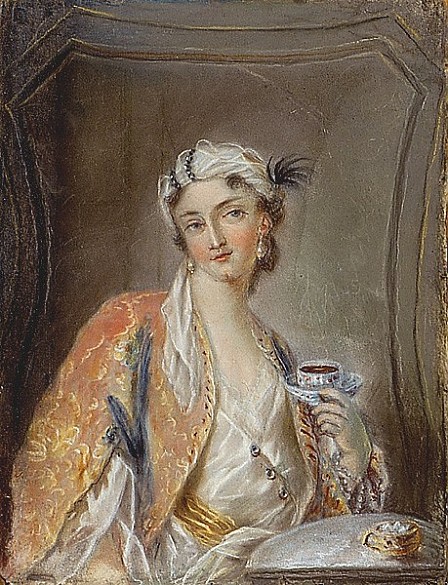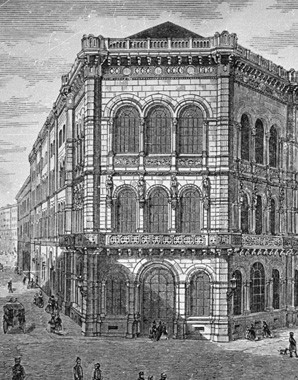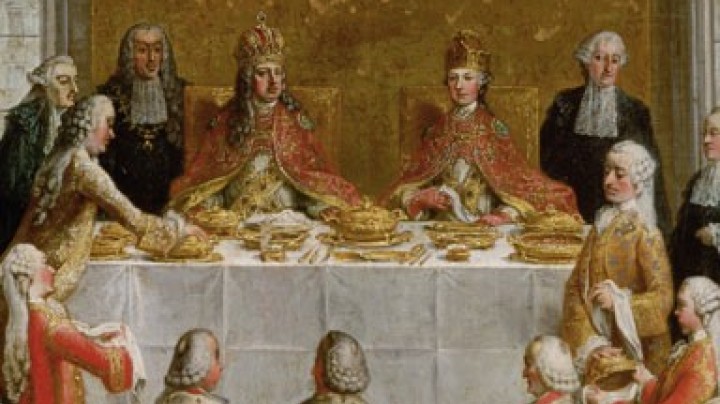Therapeutic, luxurious and a stimulant – Coffee and tea are put on the menu
These two hot drinks, served in valuable porcelain, became an essential item of consumption for the aristocracy and the upper middle-class, standing for luxury and prestige.
Quote from Johann Pezzl’s Sketch of Vienna, 1786-90.In Vienna too the thirst for coffee has found its way down to labourers and market-women. That is why you will find that by noon wooden stalls have been put up in all the suburbs where the drink’s enthusiasts among the lower orders are served with a cupful and a croissant for 1 kreuzer. However, this is not genuine coffee, but roasted barley sweetened with some syrup, and such lowly folk drink this concoction because for 1 kreuzer there is no other breakfast to be had that tastes so good and warms the stomach so well.
These products from the New World became known in Europe thanks to travellers’ tales and a large number of medical treatises which dealt with the medicinal powers of chocolate, coffee, tea and tobacco. Doctors of the early modern period agreed that these medicaments from America could bring the body’s ‘humours’ or fluids back into equilibrium, although they also warned of health risks.
The price of coffee and tea was extremely high, so that they tended to serve mainly as status symbols for the Court and aristocratic society. In order to cover up the bitter flavour of these drinks they were sweetened with sugar, which was also expensive. Porcelain was another item which was considered just as luxurious and prestigious as tea and coffee. From the seventeenth century it was imported from China, becoming part of the fashion for things oriental in Court circles. Even when porcelain manufactories were established in Europe – for example in Vienna in 1718, this did not lead to a decline in imports from the Far East.
The upper middle-classes valued tea and coffee as stimulants and for their ability to improve one’s concentration, although they were also aware of the pleasurable and social aspects of drinking them in the coffee-houses. When these also began to serve light meals and alcoholic drinks and thus to provide increasing competition for inns and taverns there were complaints from the landlords of these establishments, who soon retaliated by serving tea and coffee on their own premises. At home, women began to form coffee circles, because they too wanted to enjoy the hot drink even though it was not considered decent behaviour for them to go to a coffee-house. In the course of the seventeenth and eighteenth centuries tea and coffee increasingly became part of the daily routine for the bourgeoisie. Cheap surrogates like coffee made from cereals played an equally important role in the lives of the lower classes.















